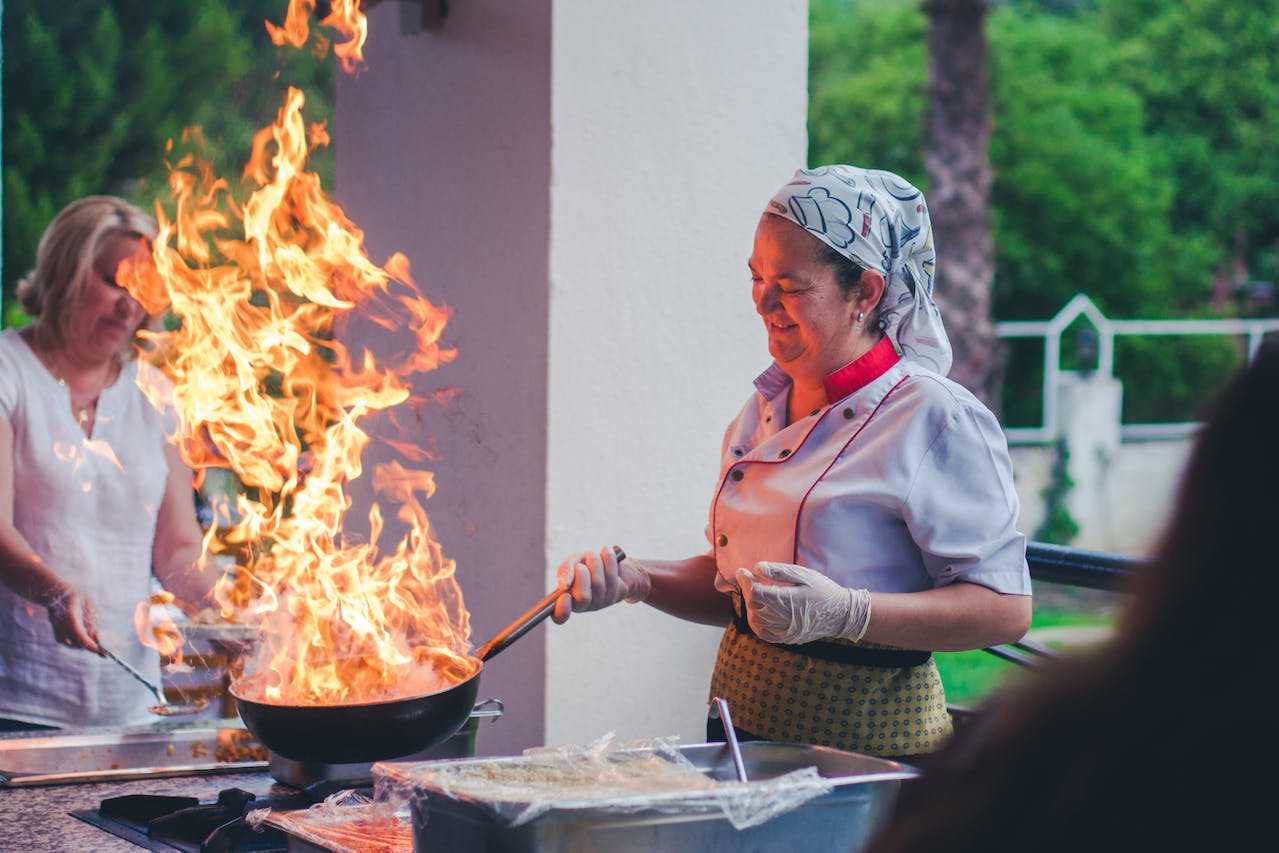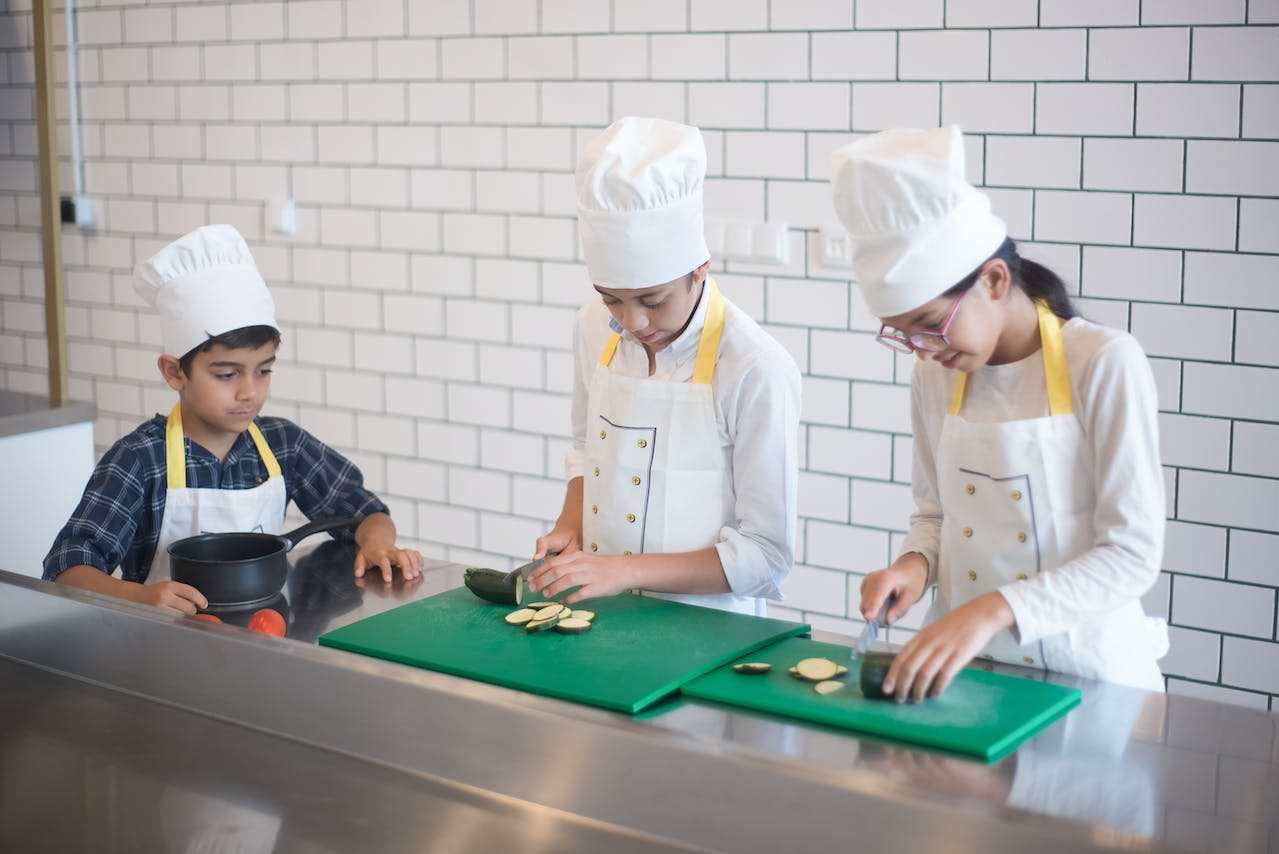Crafting a flavorful future in the world of Japanese restaurants requires a combination of traditional culinary techniques, innovation, and a deep understanding of the culture and ingredients.
Japanese cuisine is celebrated worldwide for its balance, precision, and emphasis on fresh, high-quality ingredients. Here are some key elements to consider for achieving culinary excellence in Japanese restaurants
Mastery of Traditional Techniques
Mastery of traditional techniques is the keystone to crafting an authentic Japanese culinary experience, where precision in sushi artistry and knife skills intertwine with a profound respect for seasonal ingredients.
- Sushi Artistry: Invest in training chefs with a focus on sushi craftsmanship. Perfecting the art of making sushi rice, slicing fish, and creating visually appealing presentations is crucial.
- Knife Skills: Emphasize the importance of precise knife skills, a fundamental aspect of Japanese culinary art. Chefs should be adept at cutting, chopping, and filleting with precision.
- Seasonal Cooking: Highlight the significance of seasonal ingredients and the kaiseki tradition, where the menu reflects the changing seasons. This ensures the use of fresh, locally available produce.

Ingredient Selection and Sourcing
Excellence in Japanese cuisine begins with meticulous ingredient selection and sourcing, ensuring a harmonious blend of high-quality, seasonal elements sourced responsibly for an unparalleled culinary journey.
- High-Quality Ingredients: Prioritize fresh, high-quality ingredients. Establish relationships with local suppliers and, if possible, import key ingredients directly from Japan.
- Sustainability: Consider sustainable sourcing practices. This not only aligns with modern values but also ensures the long-term availability of premium ingredients.
Innovative Fusion with Authenticity
Striking a delicate balance, innovative fusion with authenticity elevates Japanese cuisine by marrying traditional flavors with creative twists, providing a culinary adventure that captivates both purists and adventurous diners alike.
- Creative Fusion: While respecting tradition, encourage chefs to experiment with innovative flavor combinations and presentation styles. This could involve fusion with local ingredients or techniques, keeping authenticity intact.
- Culinary Collaborations: Consider collaborations with chefs from different culinary backgrounds to bring diverse perspectives and ideas to the table.

Ambiance and Dining Experience
Beyond the plate, the essence of Japanese culinary excellence extends to the meticulous curation of ambiance and dining experience, where aesthetic presentation, thoughtful interior design, and interactive elements converge to immerse diners in a multisensory journey.
- Aesthetic Presentation: Pay attention to the overall dining experience. Invest in the visual presentation of dishes, the restaurant’s interior design, and the authenticity of the dining ambiance.
- Interactive Dining: Incorporate elements of interactive dining experiences, such as teppanyaki or open-kitchen concepts, to engage and captivate diners.
Technology Integration
Seamless technology integration enhances the Japanese dining experience, from dynamic digital menus that tell the story behind each dish to efficient online reservation systems, creating a modern synergy between tradition and innovation.
- Digital Menu Platforms: Utilize digital platforms for dynamic and interactive menus. This can include detailed descriptions, stories behind dishes, and even virtual tours of the restaurant or kitchen.
- Online Reservation Systems: Implement efficient online reservation systems to streamline the booking process for patrons.
Continuous Training and Development
Continuous training and development form the culinary heartbeat, empowering chefs with evolving techniques, cultural insights, and a commitment to excellence, ensuring a dynamic and ever-improving Japanese culinary artistry.
- Culinary Workshops: Organize regular workshops and training sessions for chefs to stay updated on new techniques, trends, and ingredients.
- Cultural Awareness: Ensure that the culinary team understands the cultural significance of each dish. This knowledge enhances their ability to communicate the essence of Japanese cuisine to diners.

Community Engagement
Community engagement becomes the soul of the Japanese culinary journey, fostering a sense of connection through events, workshops, and collaborations that weave the restaurant into the fabric of the local community.
Engage with the local community through events, workshops, or collaborations. This not only fosters a sense of community but also creates a loyal customer base.
Adaptability and Resilience
Adaptability and resilience are the cornerstones of a thriving Japanese restaurant, enabling it to navigate changing trends, overcome challenges, and consistently deliver an exceptional dining experience in the ever-evolving landscape of the culinary world.
- Adapting to Market Trends: Stay informed about market trends and adapt the menu accordingly. This could involve introducing seasonal specials, incorporating superfoods, or responding to dietary preferences.
- Resilience in the Face of Challenges: Equip the restaurant with the resilience to overcome challenges, such as supply chain disruptions or changes in consumer behavior.
Conclusion
In the pursuit of culinary excellence within the realm of Japanese restaurants, the synergy of traditional mastery, innovative fusion, meticulous ingredient sourcing, immersive ambiance, and technological integration, coupled with continuous training, community engagement, and adaptability, forms a harmonious tapestry.
By combining these elements, a Japanese restaurant maintain culinary excellence and pave the way for a flavorful future that resonates with traditional enthusiasts and innovative dining experiences. This commitment to authenticity and innovation elevates the dining experience and ensures that the flavors of Japan resonate with the traditions.



